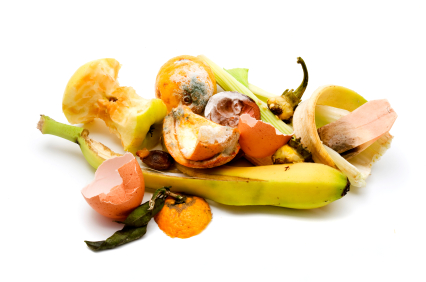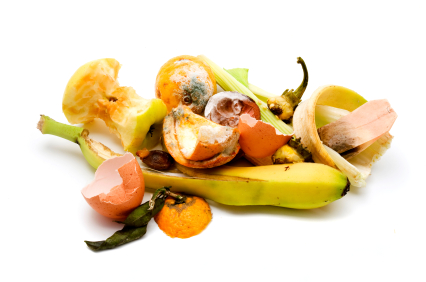 We waste an enormous amount of food. A recent report by the U.N.’s Food and Agriculture Organization (FAO) found that worldwide approximately one-third of all the food we produce is lost or wasted. And it’s not just a problem for landfills. We could address a significant component of worldwide food demand as well as the need to increase agricultural productivity simply by wasting less food. As it is, 2 percent of U.S. energy production goes toward food that ends up in the trash, according to Jonathan Bloom, author of American Wasteland. And the Environmental Working Group found that wasted food accounts for 20 percent of the carbon emissions from meat and dairy production.
We waste an enormous amount of food. A recent report by the U.N.’s Food and Agriculture Organization (FAO) found that worldwide approximately one-third of all the food we produce is lost or wasted. And it’s not just a problem for landfills. We could address a significant component of worldwide food demand as well as the need to increase agricultural productivity simply by wasting less food. As it is, 2 percent of U.S. energy production goes toward food that ends up in the trash, according to Jonathan Bloom, author of American Wasteland. And the Environmental Working Group found that wasted food accounts for 20 percent of the carbon emissions from meat and dairy production.
One helpful strategy for reducing waste has been the rediscovery of thrifty styles of cooking, such as with the trend of “nose-to-tail” meat eating. (No, it’s good! Really!)
But of course, vegetables are wasted, too. In fact, the FAO report found that wastage rates for fruits, vegetables, roots, and tubers were the highest of any food.
The New York Times‘ Julia Moskin has a great suggestion: “stem-to-root” eating! As she observes, this is especially important during the summer season, when CSAs and farmers markets are in full swing.
For ideas, Moskin turned to Ann Arbor, Mich., apparently a “fertile source” of stem-to-root ideas. Here’s what she came up with:
“People know that nasturtium flowers are edible, but the leaves are also great salads and the seed pods, if you pickle them, make a wonderful substitute for capers,” said Kevin Sharp, an outreach manager at the People’s Food Co-op there, one of the oldest in the country.
He substitutes the palm-size leaves from stalks of brussels sprouts in recipes that call for collard greens, cooks the leaves and shoots of sweet potatoes and battles a bumper crop of asparagus by making a sweet relish from the woody ends.
Lindsay-Jean Hard, who works at a new farm-to-table Web network called Real Time Farms, said that she chops the leaves atop celery stalks to make a pungent, fluffy celery salt.
But my favorite advice came from a Southern source — the appropriately named chef Andrea Reusing of Chapel Hill, N.C., who prowls nearby farms looking for “renegade vegetable specimens”:
She particularly relishes the strange shoots that emerge when a garden has bolted from too much heat: cilantro flowers, broccoli seed pods and tough lettuces that cry out for creamy, rich dressings and bacon-fat vinaigrettes.
Her cooking often combines Southern farmhouse tradition with the flavors of Japan, Korea and China, rich sources of stem-to-root traditions. She buys from farmers who grow Asian varieties of turnips, soybeans and radishes; she has salt-cured whole daikons, pickling the white flesh and salting the greens with chiles. The leaves of the wasabi root, she said, have an oily, mustardy kick: she slices them thinly to use as a garnish for a Japanese-inflected pot-au-feu.
Yum!
Then there’s the Ohio ice cream maker who “milks” the sweet syrup out of corn cobs and adds it to her basic ice cream mixture.
Obviously, you don’t have to go to extremes to make a dent in your own food wastage. Even just eating the broccoli stalks rather than only the florets would be a good start. But rich as we are compared to the rest of the global population, it’s high time we returned to a thriftier style of eating. In the end, this is one delicious “sacrifice” to have to make.



